PLANÈTE B by Gwenola Wagon, an artist and professor in the Art Department of the Université de Paris 8. Published by éditions 369. The book is in French and this review will try and translate its ideas and nightmares.
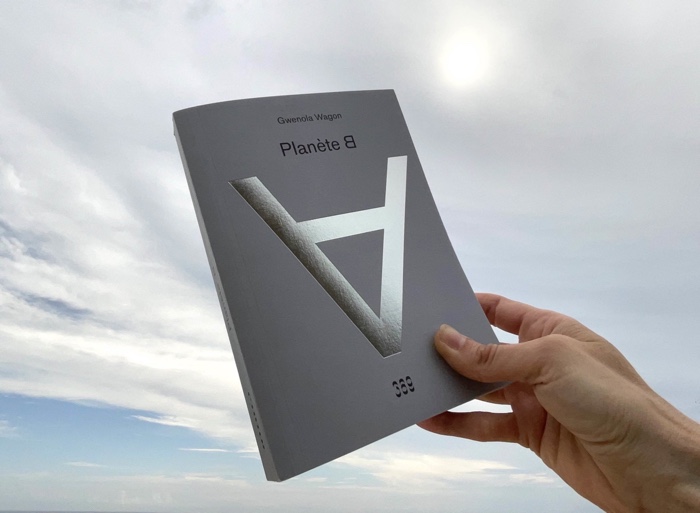
Starting with the publisher’s presentation of the book: B runs a digital company called “A”. A is about to obtain the monopoly of sales on a planetary scale. It is, in a way, a total company. Along with its sales business, A revives NASA’s fantasies of the 1970s: building colonies and warehouses in space. And B sees himself as the pilot of the Enterprise, the Star Trek spaceship.
Why is the most prominent digital multinational, which controls so many products, secretly whipping up a huge plan to escape to space? A establishes a supernaturally efficient logistical infrastructure that radically transforms our relationship to the world.
In reality, it is not about B as an individual, nor is it about a society whose name starts with the first letter of the alphabet. It is neither about Jeff Bezos nor Amazon. B is no one in particular. A is a symptom.
Planet B is an essay that operates cross-checks and invents metaphors in order to apprehend a rapidly expanding monster. It tells the story of “planet B”, this hypermarket world generated by low resolution and by the speed of information propagation applied to everything. Like an outlet, Gwenola Wagon probes with seriousness and humour a logic which, through its delirious scale, escapes us.
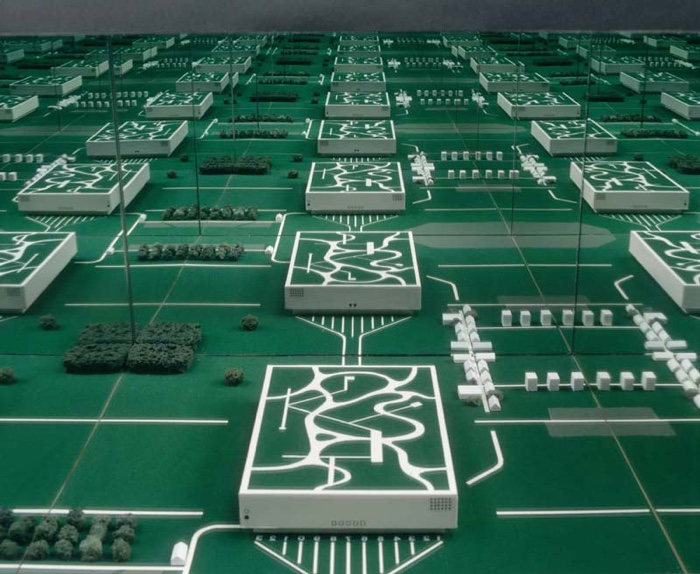
Archizoom Associati, No-Stop City (Scale model), 1969-2001. Photo: © Philippe Magnon
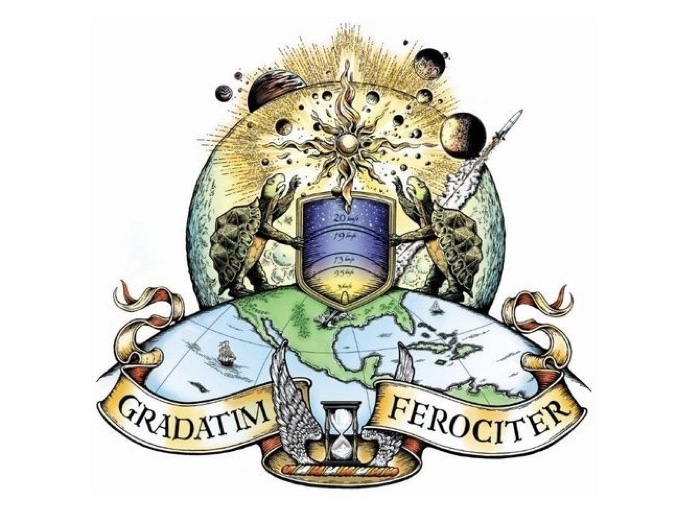
Blue Origin’s coat of arms. Gradatim Ferociter, “Step by Step, Ferociously”
In her book, Gwenola Wagon mixes research, reflections and speculations to narrate the logic and absurdities of Planète B. She unfolds what she calls the “poison system”, a system that spread its tentacles in all directions and generates nefarious consequences at all levels.
We already know a lot about A and B. The mastership in tax evasion, the pavlovian signals the platform sends us, the devouring of smaller companies, etc. When A is not a shop, a provider of data hosting for governments and corporations, the owner of a legendary newspaper, a domestic security provider or the promoter of space tourism, it is a signifier of deplorable labour conditions, hyper profitability, unpaid taxes, hideous utilitarian warehouses, frenzied resource destruction, ransacked urban fabric, etc.
Wagon mentions the scandals and stories that we already know and recalls the ones we’ve forgotten about (that Whiskas Dash Button!) The reason why I’m reviewing her book is that the author also puts the story of A and B in a broader, even more bizarre context, conjuring the ideas of Shoshana Zuboff, Ray Bradbury, Philip K Dick, Rem Koolhaas, Archizoom to make sense (or not) of A’s trajectory and drawing parallels between B and the figures of marketing executive Bernardo Trujillo, analyst and futurologist Herman Kahn, navigator Captain Cook, lemurs and H. Irving Hancock in his fight against “bodily slovenliness.”
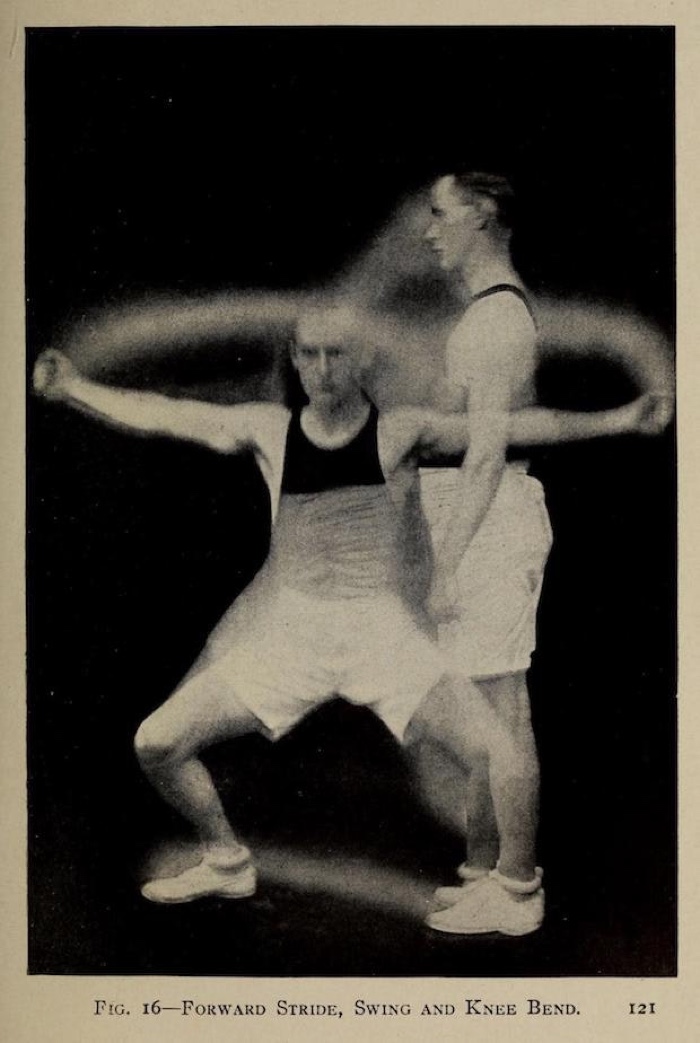
Physical training for business men. Basic rules and simple exercises for gaining assured control of the physical self, 1917 by Harrie Irving Hancock
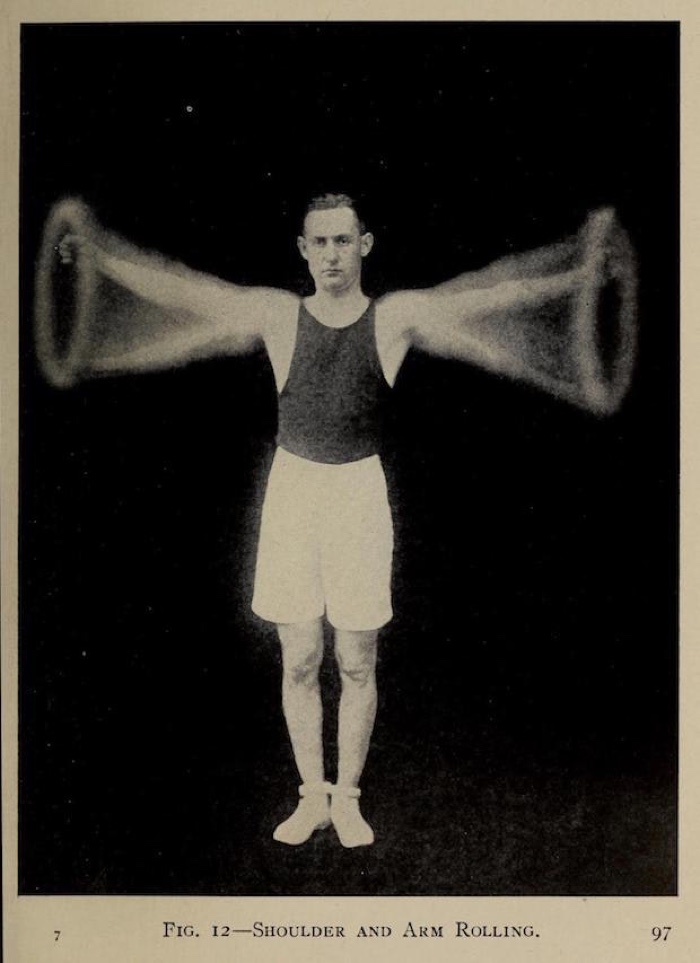
Physical training for business men. Basic rules and simple exercises for gaining assured control of the physical self, 1917 by Harrie Irving Hancock
The book is sharp, funny and even Wagon’s most outrageous speculations appear as perfectly logical if you follow A and B’s itinerary. It is also agonising to see how we (valued A customers) fit into this sad story. In the Jamesbondeification chapter, for example, Wagon shows how a new Jeffy has emerged fitter and richer from the pandemic. The no-frill, beige and boring Jeff of the olden days is now showing off his biceps, baroque fashion taste, beautiful girlfriend and jet ski skills. Meanwhile, his company is demonstrating what trickle-down economics looks like: A’s employees are offered warm-up sessions before starting their working day. As for us, we are given the opportunity to fulfil our dreams of eternal abundance, revelling in drone-dropped Oreos and plastic pet toys from the voluptuous comfort of our own sofa. Any future desire we might have is second-guessed by algorithms. They take care of everything. That is A’s theory at least. As a result of these quick gratifications, we are now surrounded by cheap goods made from cheap non-recyclable materials. Most of them are useless, toxic and damaging to our health and the environment. Wagon writes that we now suffer from syllogomania: Compulsive hoarding. Even though Marie Kondo’s books are among the most popular items in the A catalogue, we still have an irresistible urge to accumulate often useless objects that we are unable to throw away.
Interestingly, B has launched all sorts of services to make our life easier but he never designed any that would help us deal with this overabundance of objects. Probably because he suffers from a different mental disorder. Wagon calls it claustroglobophobia, the syndrome of the globe too narrow, the feeling of being a prisoner of the Earth. He has, of course, a remedy for his ailment: escaping to a new and improved version of the Earth.
His plans and values are at odds with today’s biggest challenges. B’s vision of life in space is based on physicist Gerard O’Neill 1970s grandiose and much-idealised design projects for living in space. The vision not just looks dated, it also disregards the Space Treaty, ignores the physical laws of space and relies on even more extractivism. Just like building more and bigger warehouses means replacing precious soils with tarmac leading to even more resource depletion, building such space colonies means taking ownership of space resources and in particular of the minerals we are now relying on for the digital and energy transition. Not content to accelerate planet destruction by turning it into a giant warehouse, B plans to use the Earth as the take-off runway for his razzle-dazzle space programme.

Stéphane Degoutin and Gwenola Wagon, Atlas of the Cloud, 2021
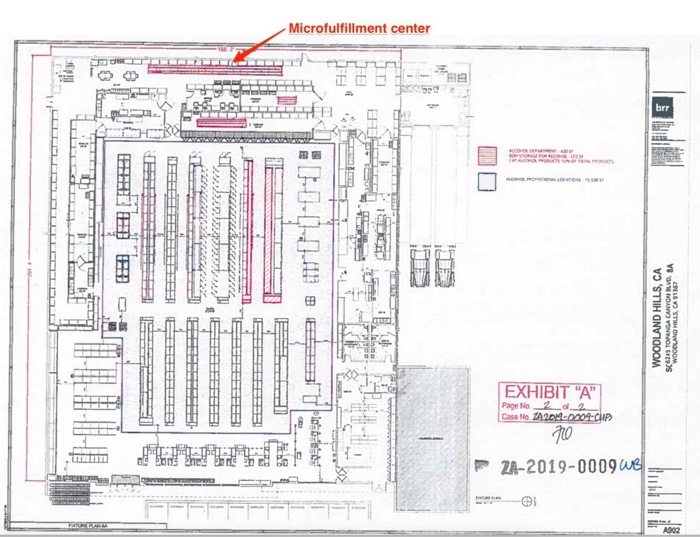
Floor plans attached to alcohol permits explain a micro fulfilment center in the back of the house. Source: City of Los Angeles, via HNGRY
Gwenola Wagon closes her alarming portrayal of the A universe with a “happy ending”. In a few years, A will start its descent into total chaos. Disgruntled customers, exhausted employees, neglected drivers and a young generation of open-eyed citizens will converge, revolt and start an international court case against A which will lead to its dismantling and atomisation. Planète B certainly demonstrates that the day can’t come too soon.
Spreads from the book:
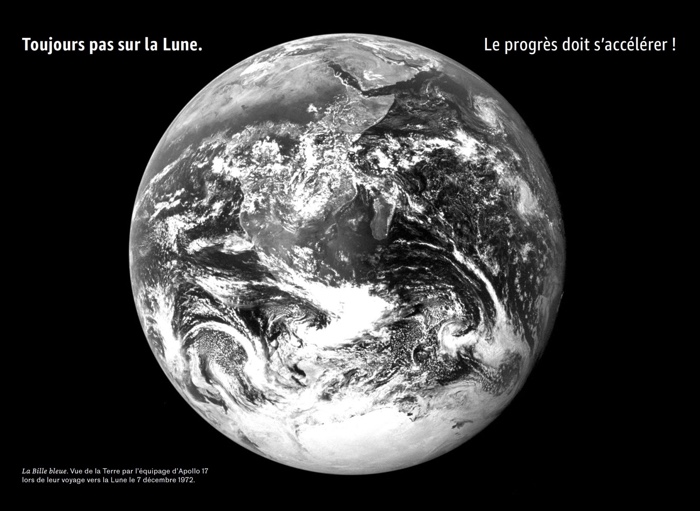
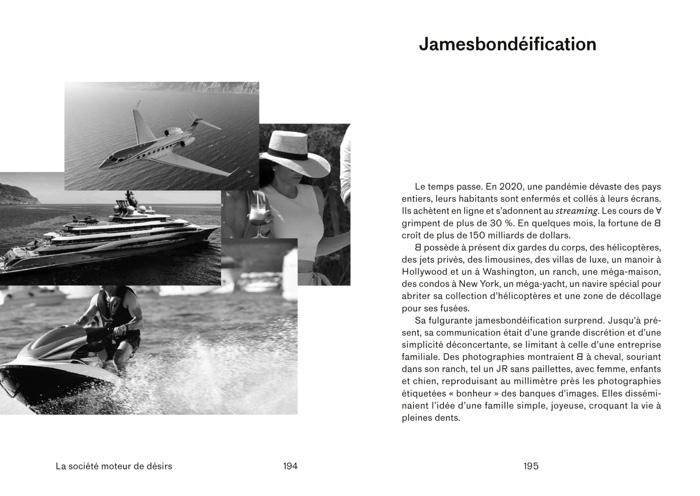
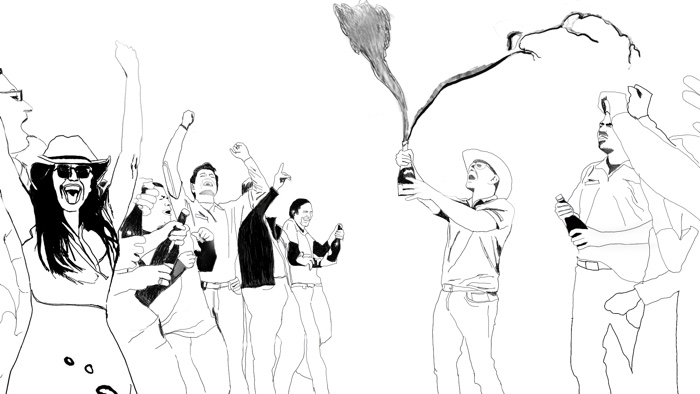
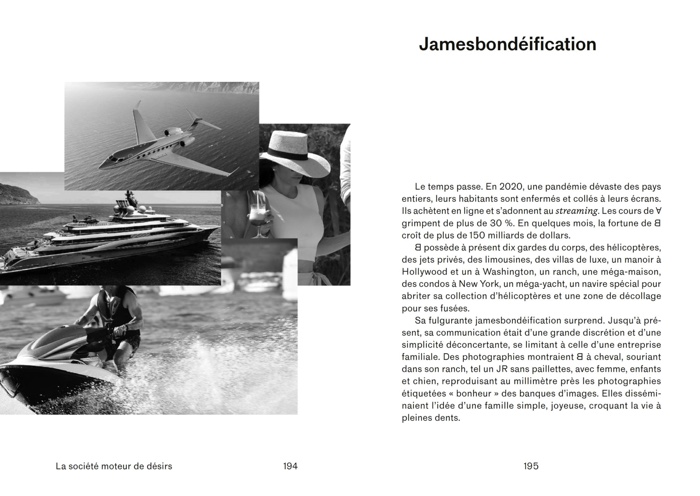
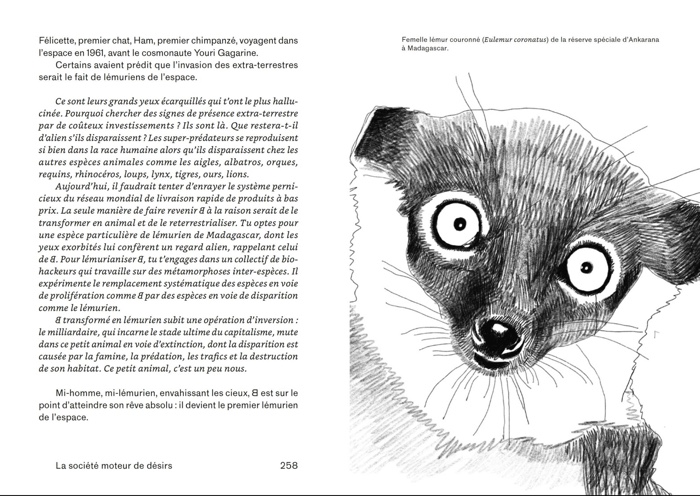
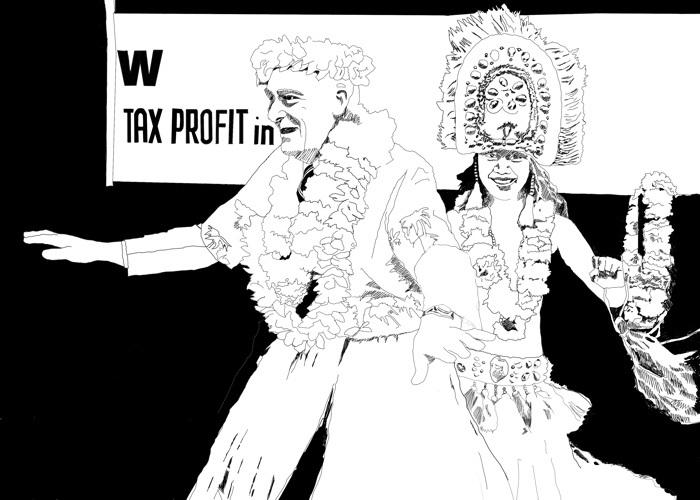
Related stories: Augmented Exploitation. AI, Automation and workers who fight back, A guided tour of Dublin’s physical Internet infrastructure, The Cost of Free Shipping. Amazon in the Global Economy, Tax Havens: Normalized Grand Theft, Post-Capital. Art and the Economics of the Digital Age, etc.
